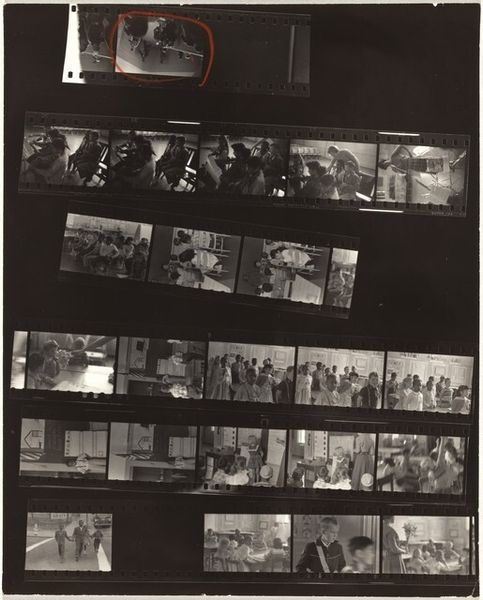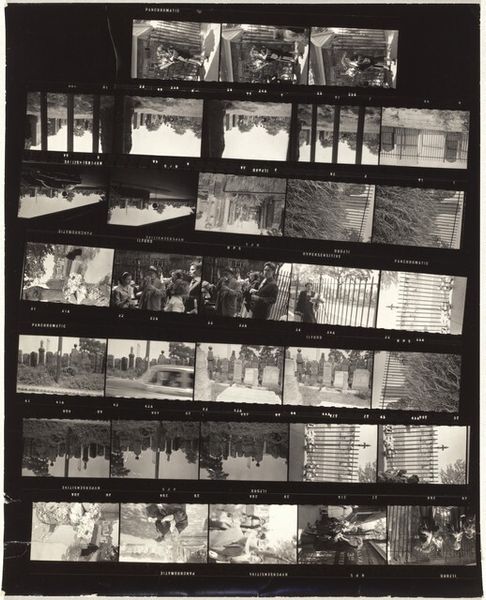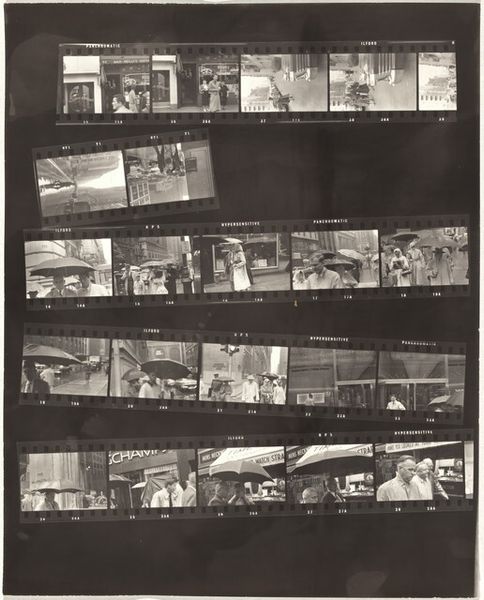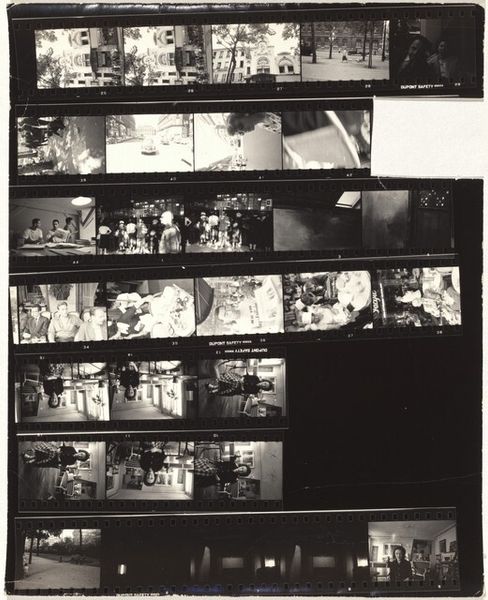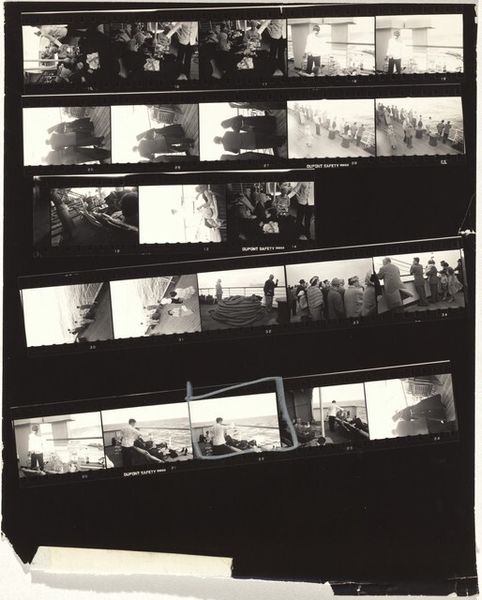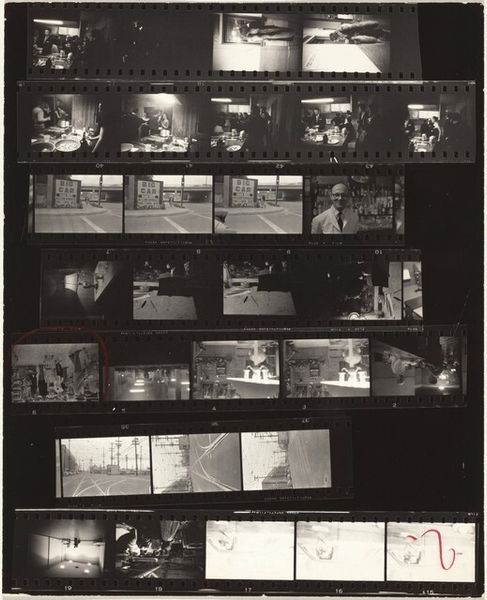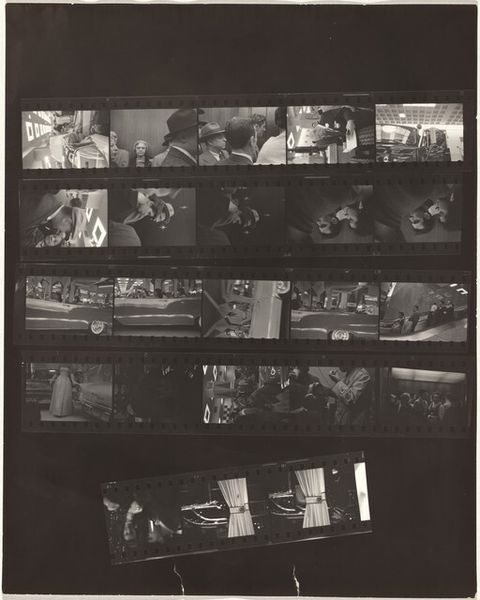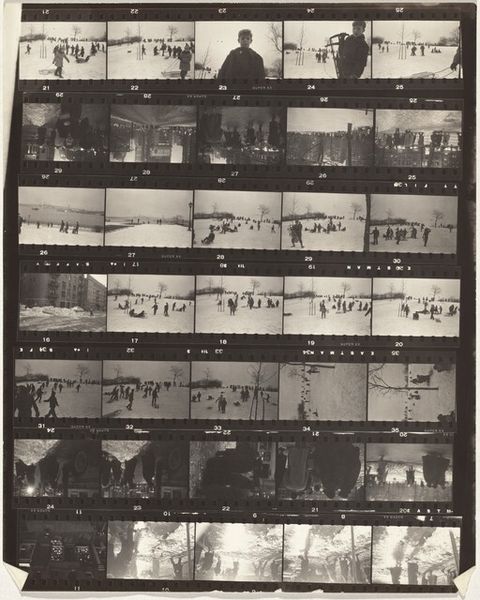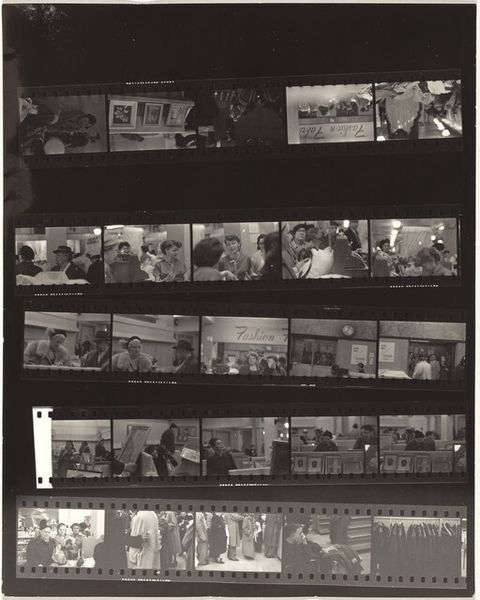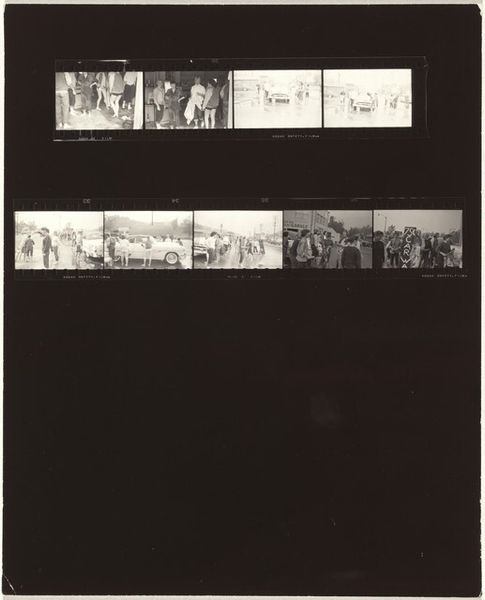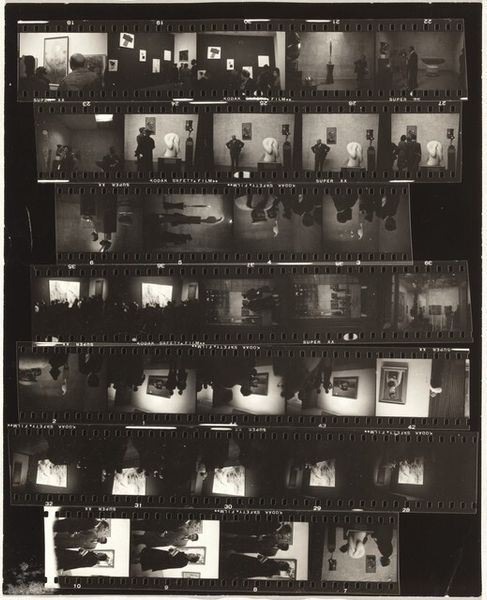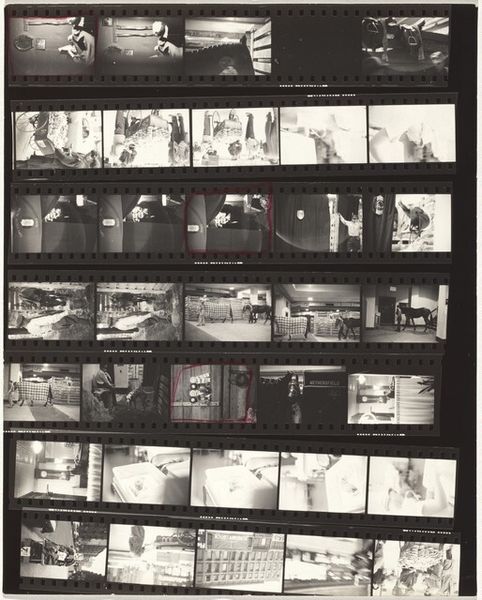
photography, gelatin-silver-print
#
archive photography
#
street-photography
#
photography
#
gelatin-silver-print
#
monochrome photography
#
cityscape
#
monochrome
#
modernism
#
monochrome
Dimensions: overall: 25.3 x 20.2 cm (9 15/16 x 7 15/16 in.)
Copyright: National Gallery of Art: CC0 1.0
Editor: Robert Frank’s 1956 gelatin-silver print, “Guggenheim 150--New York City," feels instantly fragmented, almost anxious in its rapid sequencing. Curator: Yes, it rejects traditional notions of the singular photographic image. Note how Frank arranges strips of negatives—raw, unedited—creating a visual rhythm of dark and light, absence and presence. Editor: It is fascinating how the grid emphasizes the physical presence of the film, drawing attention to its inherent materiality. These aren’t presented as pristine, objective documents but rather tactile records of observation, developed in a dark room. You almost smell the chemicals, feel the film grain. Curator: Precisely. Semiotically, each frame is a sign, but their arrangement complicates any fixed reading. We are presented not with definitive statements but with multiple perspectives. The repetition and variation form a unique, fragmented narrative. Editor: You're right. Looking closer at specific strips, you see juxtapositions of everyday scenes—street vendors, pedestrians, a parade with banners and an ambulance with its rear doors ajar—a city pulsing. The image of the prostrate figure lying on the floor feels raw, very of-the-moment. Curator: I see a discourse on urban existence, captured through an uncompromising gaze. Frank uses the inherent structure of the film strip to underscore the transient, ephemeral nature of modern life. The play of light and shadow heightens the emotional impact, revealing not just what is seen, but the very act of seeing itself. Editor: It pushes the limits of photography’s traditional purpose and medium by emphasizing its construction—showing process alongside product. We’re reminded it is more than surface and a recording tool. Curator: It transcends simple representation; it becomes an act of contemplation on the photographic medium itself, thus prompting discourse around image and language and the power of symbols. Editor: Indeed, I find it compelling how the final form reflects labor itself: editing, selection, and printing. All that darkroom process brings forward not just an image, but a means for creating art. Curator: An intriguing encounter. Editor: Absolutely.
Comments
No comments
Be the first to comment and join the conversation on the ultimate creative platform.
